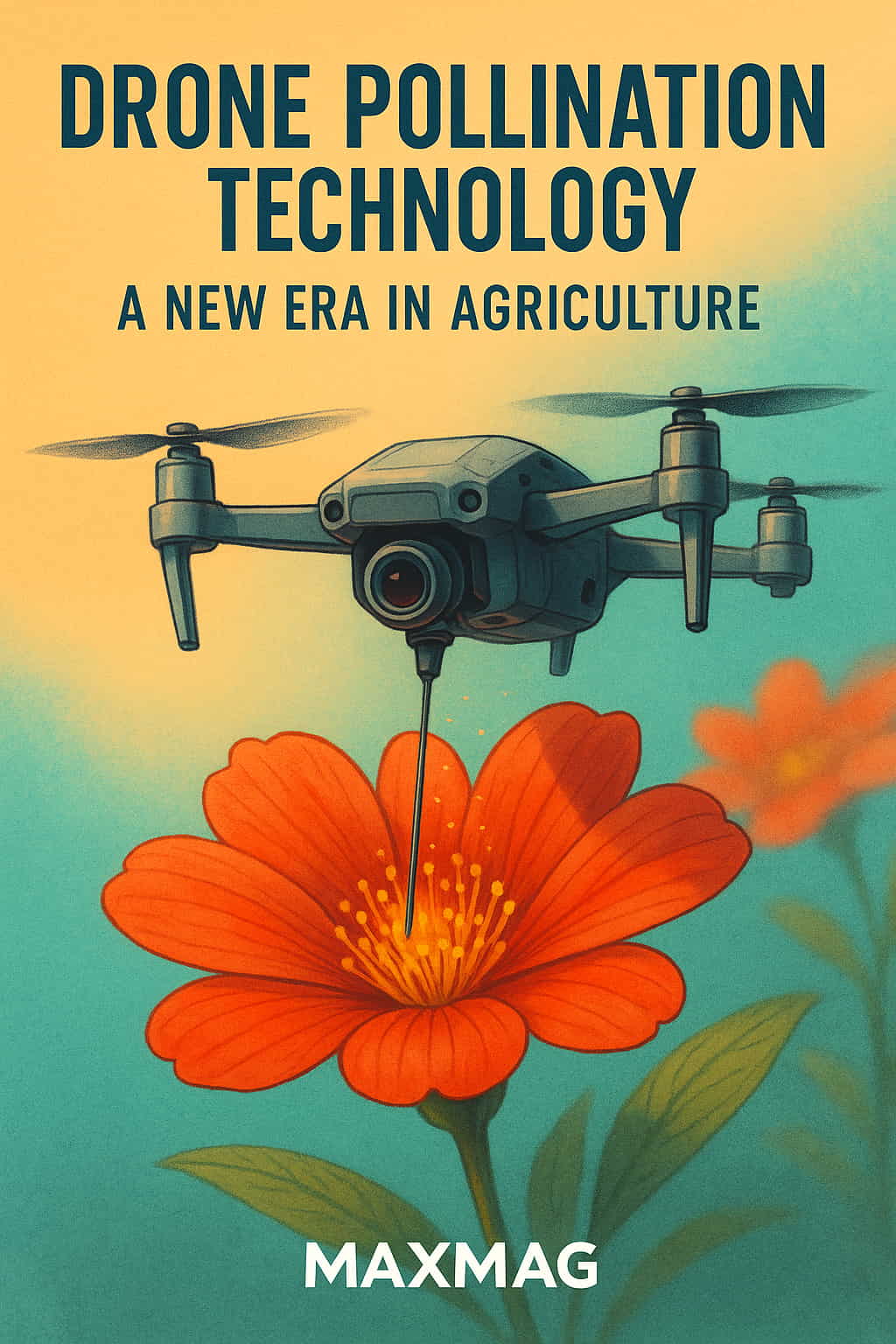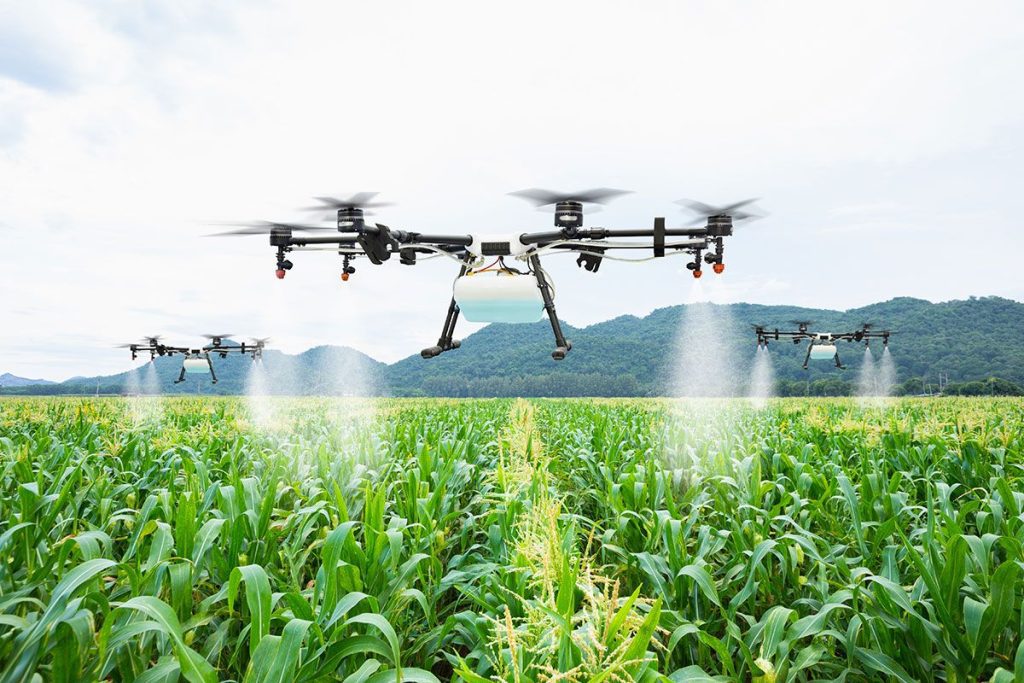
As the natural pollinators of the world face mounting challenges, from pesticide exposure to habitat loss, scientists and engineers have turned to an unexpected ally in the fight to secure our food supply: drones. Drone pollination technology has emerged as a cutting-edge alternative to traditional pollination methods, especially as the global demand for fruit and seed crops continues to rise.
This innovative approach combines robotics, artificial intelligence, and a deep understanding of botany to replicate the work that bees and other insects have done for millennia. But rather than replacing nature, drone pollination aims to support it—providing a safety net when environmental conditions fail to cooperate.
The Rise of Drone Pollination Technology
The term drone pollination technology refers to the use of unmanned aerial vehicles (UAVs) to distribute pollen across flowering plants. These drones can be equipped with various mechanisms—from tiny brushes to air jets—that gently deliver pollen from one flower to another.
In controlled environments like greenhouses, this technology allows growers to take pollination into their own hands. Outdoors, it acts as a backup system when bees are absent or insufficient in number. For crops that are highly dependent on cross-pollination, this assistance can be the difference between a successful harvest and economic failure.
What makes drone pollination truly remarkable is its precision. Using advanced sensors and navigation systems, drones can target specific areas of a field, pollinate only flowers at the optimal stage, and reduce waste or overexposure.
Why Natural Pollinators Are Struggling
In recent years, pollinator populations—especially bees—have been in decline. Climate change, monoculture farming, disease, and the widespread use of pesticides have all contributed to reduced bee activity. In some regions, entire hives have disappeared, leaving farmers scrambling for alternatives.
Pollination is not a luxury; it’s essential. Nearly 75% of the crops that feed the world rely, at least in part, on pollination. From almonds to apples, the absence of bees can have serious consequences. That’s where drone pollination technology comes into play—not as a replacement, but as a reinforcement.
How the Technology Works
Pollination drones vary in design, but their goal is the same: carry pollen and deposit it accurately onto receptive flowers. Some systems use soft brushes to mimic the natural touch of a bee’s body. Others use air pulses or static charges to guide the pollen.
In more advanced versions, drones are paired with computer vision systems that can detect flowers and determine the best moment for pollination. This enables high levels of accuracy and minimizes damage to the plants.
Operators can program drones to follow GPS-guided routes across farms, orchards, or greenhouses. In some prototypes, swarms of small drones work together to complete large-scale pollination tasks in record time.
Benefits of Drone Pollination Technology
1. Precision Agriculture
With drone pollination technology, growers can target specific crops or zones. This means they can prioritize high-value plants, optimize resource usage, and reduce the cost of over-pollination.
2. Weather Resistance
Unlike bees, drones don’t stop working in adverse conditions. They can operate in rain, high winds, or low temperatures—allowing pollination to continue during unpredictable weather.
3. Labor Efficiency
Manual pollination is time-consuming and labor-intensive. Drones significantly reduce the need for human effort, freeing workers for other tasks and decreasing operational costs.
4. Bee Preservation
By easing the burden on overworked bee populations, drone-assisted pollination may actually help protect pollinators. Farmers can reduce reliance on imported hives and avoid overstressing natural colonies.
Real-World Applications
Several countries have already begun testing drone pollination technology in real-world agricultural settings. In Japan, fruit orchards have used drones to pollinate pear blossoms. In the U.S., startups are working with almond growers to test robotic pollination during peak blooming periods.
European greenhouses, especially those producing tomatoes and strawberries, have also experimented with using drones during low-light hours—something bees typically avoid. Early results have been promising, with drones demonstrating the ability to improve fruit set and reduce the cost of labor.
Challenges and Limitations
While the promise of drone pollination is strong, there are still hurdles to overcome:
-
Battery Life: Drones have limited flight times. Covering large fields requires either battery swapping or the deployment of multiple units.
-
Cost: For smaller farms, the upfront investment in drone hardware and software may be a barrier.
-
Training: Operators need technical skills to program and maintain drones, particularly in complex crop environments.
-
Legal Barriers: In some regions, drones are subject to strict flight regulations, especially when flown beyond visual line-of-sight (BVLOS).
Despite these challenges, the technology is progressing quickly. As drone prices fall and automation improves, many of these limitations are expected to ease.
Environmental and Ethical Considerations
There’s an ongoing debate about how heavily we should rely on technological pollination. Critics argue that investing in drone pollination may reduce the urgency of addressing environmental problems affecting bees. Supporters counter that it provides a critical safety net, especially in emergency scenarios.
Ideally, the future of agriculture will involve a blend of approaches—one that supports both natural ecosystems and technological innovation.
H2: The Future of Drone Pollination Technology
Looking ahead, the next generation of drone pollination technology is likely to be smarter, lighter, and more autonomous. Engineers are developing micro-drones capable of working in swarms, guided by artificial intelligence that allows them to make real-time decisions in the field.
Research is also underway into biodegradable drones and energy-efficient systems to minimize the environmental impact. As the agricultural sector continues to digitize, drone pollination may become a standard tool, just like irrigation systems or soil sensors.
In the next decade, expect to see fully automated pollination services—where a farmer can schedule a fleet of drones to pollinate an orchard overnight, with full data reports generated the next morning.
FAQ
What crops can benefit from drone pollination?
Drone pollination can support a wide range of crops, including fruit trees (apples, pears, cherries), vegetables (tomatoes, cucumbers), and even nuts like almonds.
Do drones replace bees entirely?
No. Drones are designed to assist or supplement natural pollinators, not to replace them. Healthy bee populations remain essential to global agriculture.
Are drone pollination systems commercially available?
Some startups and research institutions are offering early models or pilot programs. However, large-scale commercial availability is still in development.
What’s the environmental impact of drone use in agriculture?
While drones require energy and materials, they can help reduce chemical use and support biodiversity by easing pressure on bee populations.
Is drone pollination affordable for small farms?
Costs are still high, but prices are expected to decrease over time. For now, larger or high-value crop farms are more likely to benefit.





